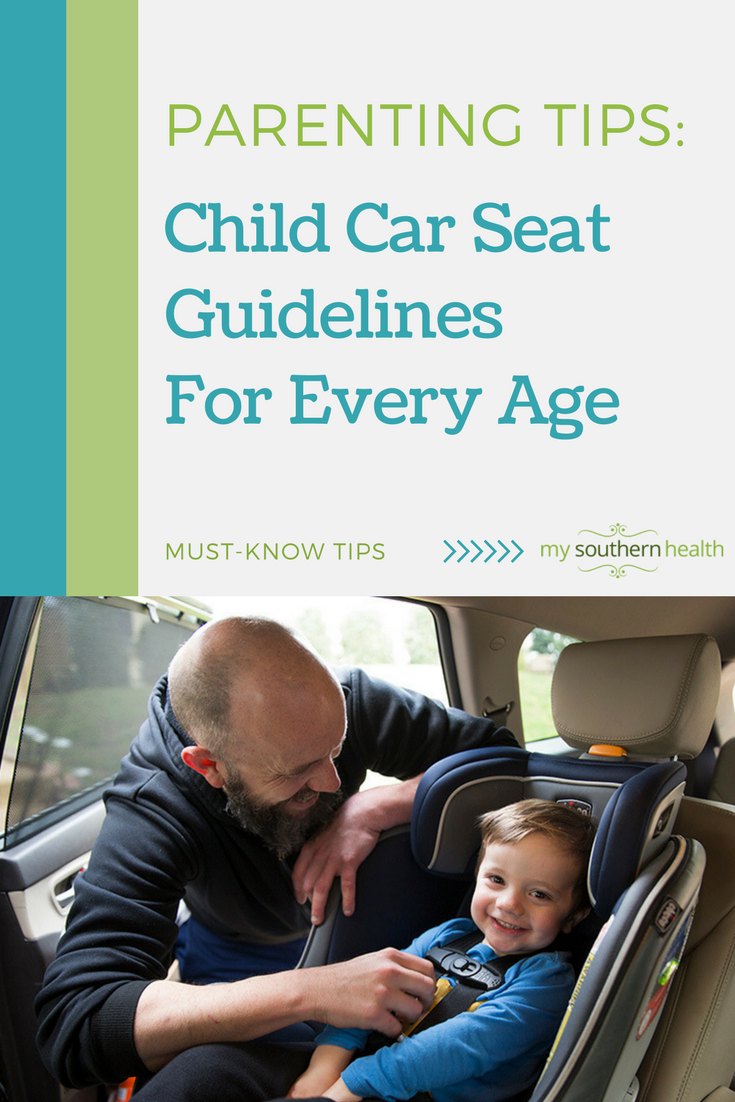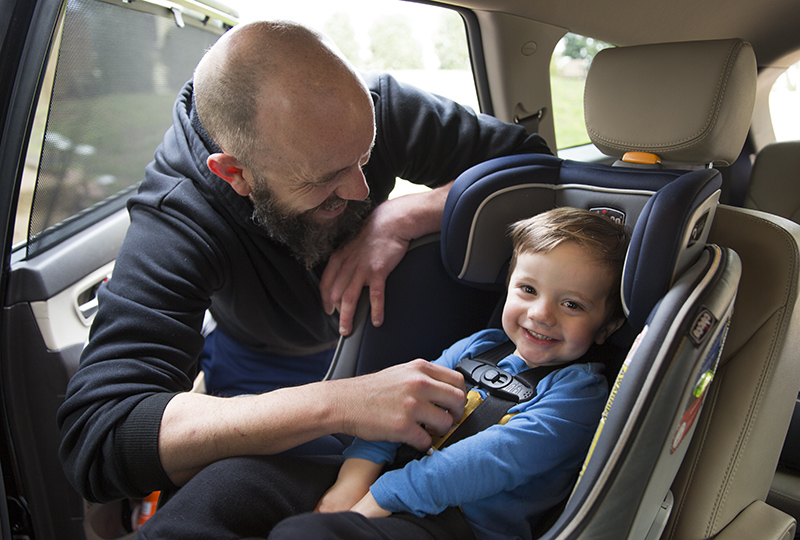Learn these car seat requirements to make sure the ones you love are safe and secure in the car on every trip.
The best way to protect children from injury in the case of a vehicle collision is buckling them into the right car seat, booster seat or seat belt for their age and size. Keep in mind that the safest place for children of any age to ride is in the back seat, properly buckled.
Keeping up with car seat guidelines and buying new seats as your children grow can be confusing. This age-by-age guide to kids’ car seats can help you gauge the best way to keep your children safe in the car:
- For the youngest children, from birth to 2 years old: Use a rear-facing car seat. For the best possible protection, buckle these babies and toddlers into rear-facing car seats, in the back seat. This is until age 2 or when they reach the upper weight or height limits of their particular seats. Check the owner’s manual and/or labels on the seat for weight and height limits.
- 2 years old to at least 5 years old: Use a forward-facing car seat.
When children outgrow the weight or height limit of their rear-facing seats, they should be buckled into forward-facing car seats, again in the back seat, until they are least 5 years old or when they reach the upper weight or height limit of their particular seats. Check the owner’s manual and/or labels on the seat for weight and height limits. - 5 years until seat belts fit properly: Use a booster seat.
After children reach the maximum height or weight limit of their forward-facing seat, they should sit on belt-positioning booster seats (again, in the back seat) until the seat belts fit properly without the booster. Seat belts fit properly when the lap belt crosses the upper thighs (not the stomach), and the shoulder belt lies across the chest (not the neck). - When the car’s seat belts fit properly without a booster seat: Use the seat belt alone, but use it every trip.
There’s no specific age when a child can stop using a booster seat. They simply no longer need to use booster seats when seat belts fit them properly. Seat belts should cross the body across the upper thighs (not the belly) and from the shoulder diagonally across the chest to the hip (not across the neck). The recommended height for proper seat belt fit is 57 inches tall. For the best possible protection, keep children buckled in the back seat.
All children aged 12 and under should continue to ride properly buckled in the back seat. Airbags can kill young children riding in the front seat. Never place a rear-facing car seat in the front seat or in front of an airbag.
We encourage drivers with child passengers to visit a child safety seat inspection station to have a certified technician inspect their car seats and give free hands-on advice. Locate a car seat inspection station in your area.


